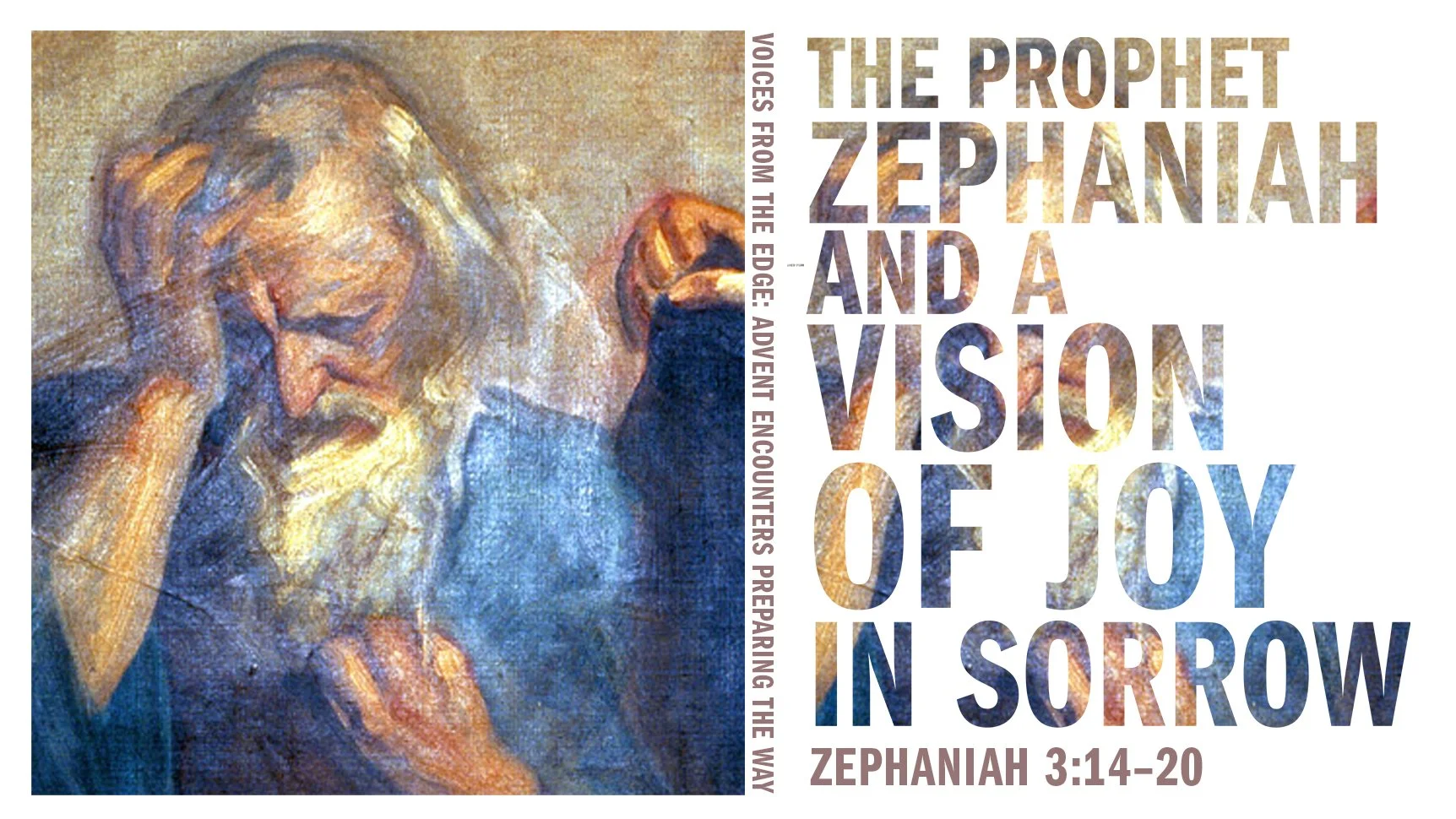Redeemer announces 2021 Advent Series, voices from the edge
Advent has long been a time of preparation, preparation for the celebration of Christmas. Yet the road to Christmas is anything but easy. It twists, it turns, and we meet many strange figures along the way. Prophets cry out in visions. John the Baptizer preaches in the desert. Angels appear whether you are asleep or awake. The voices are varied, the places are strange, but one thing is certain: in each encounter, God is preparing us for the celebration of the greatest encounter of all, the birth of Jesus, his Son, our Savior, the Redeemer of the world.
voices from the edge: advent encounters preparing the way
Overview of the Series
Through divine encounters with his word, God changes our ways in the world. At first those encounters are strange, mystifying. Upon closer examination, however, they deepen our vision and awaken our participation in the gracious work God does in the world.
In 1961, a visitor walked into the Kelvingrove Art Gallery and Museum in Glasgow. He was carrying a brick. He found a painting of the crucifixion, took the brick, and started to destroy the painting. In the context of our world’s increasing violence against religion, you would assume this man’s anger, his violence, his desecration of Christian art was done out of hatred for Christianity. It was not. It was done out of love for Christ. This vandalous visitor objected to the way an artist had portrayed the crucifixion of Jesus.
Salvador Dali was the artist and the painting was Christ of St. John of the Cross. In it, one sees Jesus, hanging on the cross, over the world. The problem for the visitor was not the crucifixion but the way this crucifixion challenged him with its strangeness. Dali had changed the traditional perspective people have when they look at a crucifixion. When we see a crucifixion, we are accustomed to looking up into the face of Jesus. Dali, however, asks us, for a moment, to be situated above the cross. We look down upon Jesus, who himself is looking down upon the world. For the visitor, this stance was sacrilegious. Unholy. The painting invited him to place himself above Jesus. For others, however, this painting’s strangeness invites wonder as one sees the world-encompassing mission of God.
Dali’s painting challenges preconceptions of how a crucifixion has to be seen. It creates an encounter that changes your vision and invites you to see things anew. Dali invites the viewer, for a moment, to see the crucifixion through the eyes of God the Father. Our heavenly Father looks down upon the fallen world and sees it through the eyes of his Son Jesus, dying on the cross, for all people. Seeing the crucifixion that way reminds you of the larger mission of Jesus. This mission certainly includes you (something you see when you stand in front of a traditional crucifixion looking up into the eyes of Jesus) but it is also a mission that doesn’t stop with you (something you now see when you look at Jesus on the cross hanging over the whole world). God’s love in Christ reaches to the ends of the earth.
Divine encounters are like that. They change the way we see things and Scripture is filled with them. Moses holds up the serpent in the wilderness and invites people to see in this emblem of suffering and judgment a glimpse of God’s mercy and their healing. Hosea marries and remarries a prostitute and invites God’s people to see in this emblem of discord and shame a glimpse of their sin and God’s long-suffering love. Jesus points to the lilies of the field and invites his disciples to see in this emblem of the world’s passing glory a glimpse of the lavish care God bestows upon his people. Jesus tells the story of an aged father who foolishly bestows honor upon a wayward son and invites people to see in this emblem of foolishness a glimpse of God’s prodigal favor and never-ending love.
This sermon series is built around the theme of Advent encounters. In each sermon, God’s people will hear a word of Scripture, a voice from the edge, and through that word experience a reorientation toward their life experience. Someone on the edge of this world’s ways will speak and what is said will change the way God’s people live in the world.
In each sermon, therefore, you will find two tensions: the tension of what it is like to hear a strange word from a strange prophet and the tension of what it is like to have that word challenge you and transform you and change the way you live as God’s people in the world.






This fourth sermon focuses upon the apostle Paul and his vision of a new creation in Christ. That vision is infinite, encompassing the restoration of all things, and yet also intimate, centered in the death and resurrection of Christ.